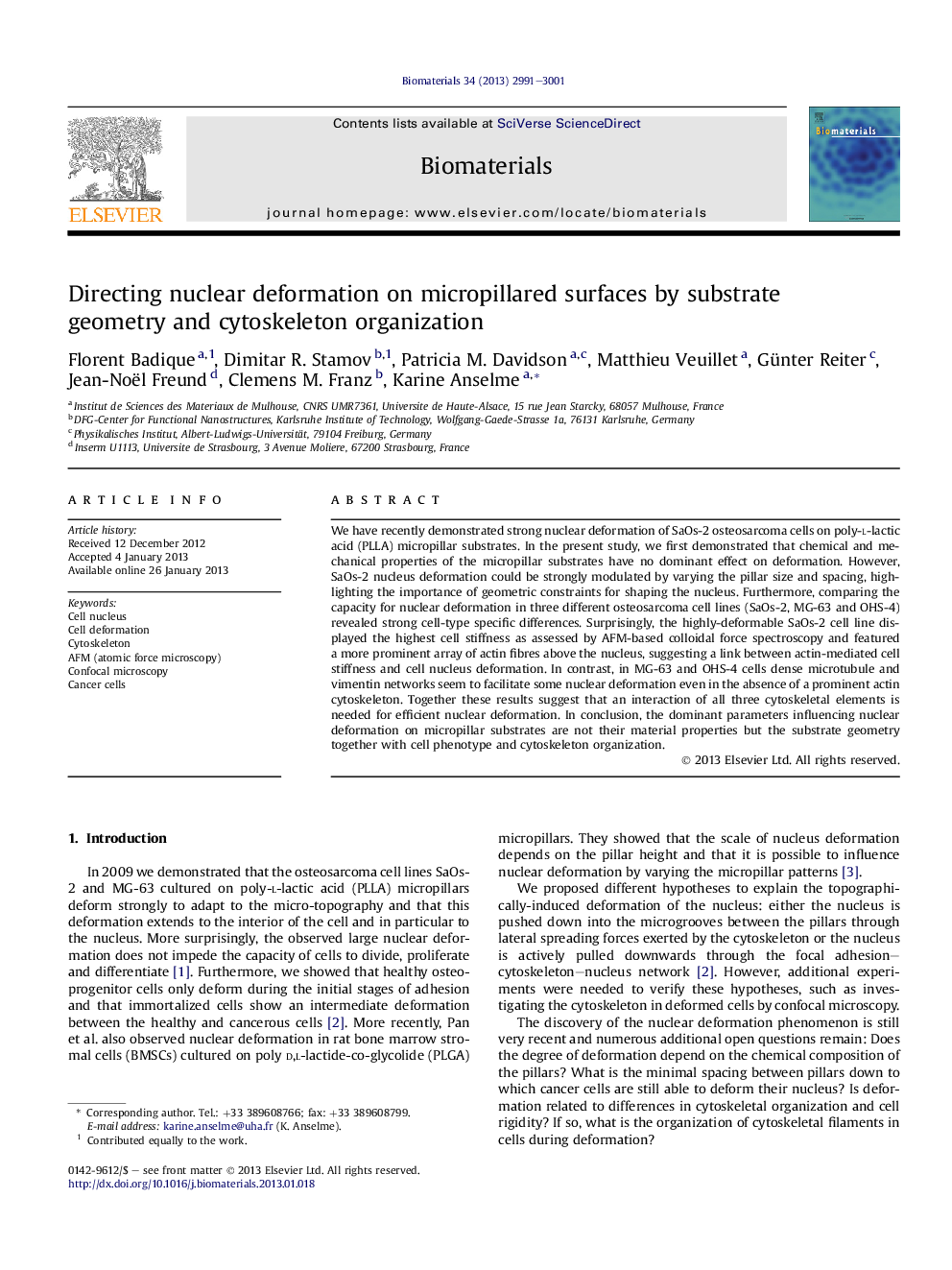| Article ID | Journal | Published Year | Pages | File Type |
|---|---|---|---|---|
| 6264 | Biomaterials | 2013 | 11 Pages |
We have recently demonstrated strong nuclear deformation of SaOs-2 osteosarcoma cells on poly-l-lactic acid (PLLA) micropillar substrates. In the present study, we first demonstrated that chemical and mechanical properties of the micropillar substrates have no dominant effect on deformation. However, SaOs-2 nucleus deformation could be strongly modulated by varying the pillar size and spacing, highlighting the importance of geometric constraints for shaping the nucleus. Furthermore, comparing the capacity for nuclear deformation in three different osteosarcoma cell lines (SaOs-2, MG-63 and OHS-4) revealed strong cell-type specific differences. Surprisingly, the highly-deformable SaOs-2 cell line displayed the highest cell stiffness as assessed by AFM-based colloidal force spectroscopy and featured a more prominent array of actin fibres above the nucleus, suggesting a link between actin-mediated cell stiffness and cell nucleus deformation. In contrast, in MG-63 and OHS-4 cells dense microtubule and vimentin networks seem to facilitate some nuclear deformation even in the absence of a prominent actin cytoskeleton. Together these results suggest that an interaction of all three cytoskeletal elements is needed for efficient nuclear deformation. In conclusion, the dominant parameters influencing nuclear deformation on micropillar substrates are not their material properties but the substrate geometry together with cell phenotype and cytoskeleton organization.
